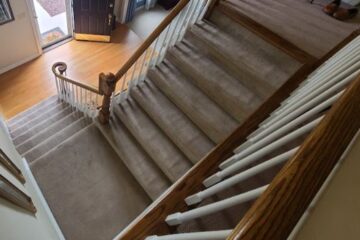A vertical lift and a commercial stair lift serve similar purposes but are designed for different applications and environments.
1. Vertical lift A vertical lift, also known as a platform lift, is designed to transport people and goods vertically between different levels. It operates by moving a platform up and down along a track or guide system, providing accessibility for individuals with mobility challenges or transporting items like wheelchairs, groceries, and equipment.
Vertical lifts can be installed indoors or outdoors and serve various settings, such as homes, buildings, and public spaces.
They are often larger and more robust than stair lifts, capable of accommodating wheelchairs and multiple passengers.
2. Commercial stair lift A commercial stair lift, also known as a stair chair lift or stairlift, is specifically designed to assist individuals with mobility issues in navigating staircases. It consists of a motorized chair attached to a rail system installed along the stairs’ length. The chair moves along the rail, allowing the user to be transported safely up and down the stairs while seated.
Commercial stair lifts are primarily used indoors in commercial settings such as businesses, institutions, or public buildings where accessibility is required but installing an elevator or vertical lift may not be feasible or cost-effective.
Stair lifts are generally smaller and more compact than vertical lifts, designed to fit within the space constraints of a staircase.
While both vertical lifts and commercial stair lifts provide accessibility solutions for individuals with mobility challenges, they are designed for different purposes and environments. Vertical lifts offer vertical transportation between levels, whereas commercial stair lifts assist individuals with navigating staircases specifically.
The cost difference between a vertical lift and a commercial stair lift can vary significantly based on several factors.
1. Type and model Different manufacturers offer a variety of models with varying features and specifications that can affect the price.
2. Size and capacity The size and weight capacity of the lift will impact the cost. Larger lifts capable of accommodating wheelchairs or multiple passengers will generally be more expensive.
3. Installation requirements Installation costs can vary depending on factors such as the complexity of the installation, modifications to the building structure, and whether electrical wiring or other infrastructure needs to be added or upgraded.
4. Customization Customization options such as finishes, materials, and additional features can increase the cost of both types of lifts.
5. Maintenance and service Consideration of ongoing maintenance and service costs is important because this can vary depending on the complexity and type of lift.
6. Location Regional differences in labor costs and building regulations can impact the overall cost of installation.
Generally, commercial stair lifts tend to be less expensive than vertical lifts because they are typically simpler in design and installation. However, the specific cost difference can vary widely depending on the factors mentioned above.
For a more accurate estimate of the cost difference between a vertical lift and a commercial stair lift, it’s best to consult with Power Stair Lifts, who can provide quotes based on your specific requirements and location.
If you live in Allentown, Bethlehem, Easton, Macungie, Schnecksville, Whitehall, Coopersburg, Quakertown, Kutztown, Northampton, Emmaus, Catasauqua, Nazareth, or another Lehigh Valley location, call Power Stair Lifts for a free in-home estimate. We are independently owned and operated—not a franchise—and our mission is to serve our neighbors and community. Click through our site and web pages at powerstairlifts.com or call (484) 215-3232 to schedule your free home assessment and estimate.


